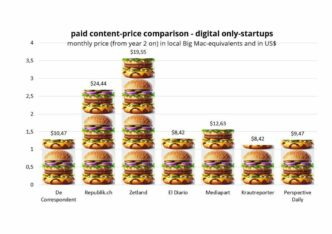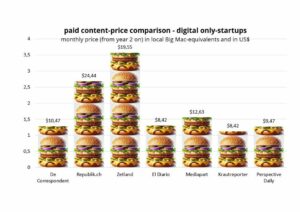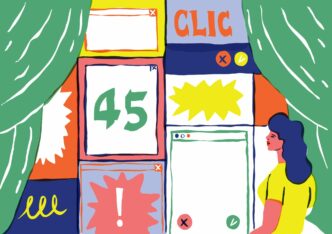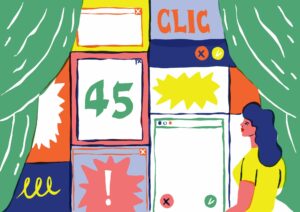

Thanks to our work with publishers from around the world, we’ve uncovered so many little tricks that, despite being simple to implement, will significantly increase paywall conversion rates. There are 5 of these in particular that are essential to put in place before you dive into the more complex dynamic strategies”
Maxime Moné, speaking on Mediarama’s podcast with François Defossez.
—
2016, Bordeaux: Maxime co-founds Poool (owner of The Audiencers) to provide digital content producers with the tools to better convert, manage and retain their members and subscribers on both desktop and mobile. The first product on-the-market, Poool Access, the Audience Conversion Platform, is now used by over 140 publishers around the world.
Whether you’re planning on launching a subscription model or are looking to optimize your existing strategy, Maxime has 5 simple hacks for you to increase conversion rates, effective for all types of paywalls (implemented by Poool or not).
Hack #1: Make sure visitors see the paywall
It’s self-explanatory: the more a user sees the wall, the more chance that they’ll subscribe. But between the % of traffic who have the potential to be exposed to the paywall (i.e. they visit a premium article) and the visitors who scroll far enough to actually see the wall, we already see a 50% loss in audiences on average.
To combat this loss of potential subscribers, you have a few options:
- The most effective: display a full-page wall covering all content, just like The New York Times or FT. In this case, the reader only has to scroll a tiny bit (if at all) to see the paywall, and you’ll guarantee yourself 95-100% visibility. Obviously, if your business model depends partly on advertising, you’ll have to be careful not to hide your ads and damage revenue. It’s therefore not a hack suitable for everyone.
- The most risk-free: try moving the paywall further up the article. In most cases, paywalls are displayed after 20% of the content, or after the 2nd paragraph. So try reducing the amount of text available to read before the wall. One of our clients tested this strategy, increasing the percentage of text blocked by 10% (from 80% to 90% blocked) which led to a 3.9% increase in paywall visibility rate within 5 weeks.
- The most adaptable: let your editor choose where the wall will block! This allows them to integrate the paywall into their storytelling, adding the wall just before the cliff hanger to better encourage conversions. This is what Eric Le Braz calls The Hourglass Technique.
- The most basic thing to remember: make sure your paywall load time is fast, and that it’s called early on, especially in relation to your ad scripts. Pre-upload, and optimize the weight of font and images.
KPIs to track to measure success at this step: - Paywall visibility rate: no. of paywalls viewed / no. of paywalls loaded on the page - Click-through rate on the paywall
Hack #2: optimize the wording on your paywall
This hack isn’t difficult, it’s marketing. And it hides huge potential – publishers who have worked on their value proposition with Poool, explaining their product offerings and testing wording have increased conversion rates by more than 30%.
To do the same, make sure that you correctly present:
- The benefits of subscription and customer pain-points that you solve – go back to Marketing 101 to work through Alexander Osterwalder’s value proposition canvas, pairing the customer profile with your product
- Your offer – is it a temporary special offer? If so, specify the end date. Is it personalized to the individual (e.g. a student offer)? Let them know!
- Your product features: access to content, of course. But what about the services provided? UX features such as the ability to save content for later? Ability to leave a comment? An ad-free experience? Don’t let anything remain a secret
- Your USP: do you cover unique stories that readers can’t get elsewhere? How about a famous editor? Exclusive content? An independent publisher? It’d be a shame to keep this quiet
A/B test the performance of these texts, the way you display them, supporting images and what information you include. We can’t promise that you’ll find the perfect formula straight away, but this will put you on the right track. And, in particular, don’t forget hack #3.
KPIs to track to measure success at this step: - Click-through rate on your main CTA “Subscribe” - Exit-rate when faced with the paywall
Hack #3: regularly change your paywall
It’s well known in the advertising industry that if we’re exposed to the same visual for too long, we become blind to it. It’s the same with your paywall, what we call paywall fatigue. If your wall always looks the same, CTR will stagnate, then decrease. If, on the other hand, you regularly update your paywall, such as by altering the design or messaging, you’ll see a 15-100% increase in clicks in the weeks following.
How can you master this hack?
- Add it to your calendar, make this wall update part of your routine, at least once a month
- Identify opportunities in your reader journey and editorial line, making the most of local, national and international events. One of our clients, ELLE Magazine, changes their wall for sales, Christmas, summer, Black Friday, Mother’s day…
- Prepare designs in advance. With Poool’s platform, we made it a priority to give marketing teams autonomy in being able to change wall design in minutes. You’ll no longer need to wait for the dev team to find the time to help you. With this feature, the opportunities are endless, and preparing these in advance means you’re ready to launch at any moment
- Promote special offers. Even if it’s as simple as changing the color of your wall or adding a date for the end of the offer, the importance lies in surprising your reader’s gaze with a new wall
KPIs to track to measure success at this step: - Click-through rate on your paywall (making sure to mark the dates when you made changes to the wall) - User-to-subscriber conversion rate
Hack #4: integrate the subscription offers into the paywall
Instead of adding another step to the funnel and asking readers to click-through the wall in order to actually see the subscription offers, integrate them into the wall itself. This removes a potential friction point and has proven to increase conversion rates.
What does this mean exactly?
- Select 1-3 offers to promote, those that are particularly valuable to your business model or ones that lead to high retention rates
- Create a paywall design that allows you to place subscription offers one next to the other
- Launch, and congratulate yourself for removing a step in the purchasing funnel
KPIs to track to measure success at this step: - User-to-subscriber conversion rate
Hack #5: integrate payment into the paywall
In the same mindset as above, save clicks and steps in the conversion funnel by adding payment directly into the paywall.
What happens when you do this?
- The reader will add their payment details into the paywall, without having to be redirected or click-through any steps. They stay on the very article that made them convert
- As soon as the payment has been confirmed, the article will unlock
KPIs to track to measure success at this step: - User-to-subscriber conversion rate - To compare performance of this wall vs a traditional wall, you can also track exit-rate
🌟 The bonus hack
The ultimate hack underlining all the other hacks – don’t measure overall user-to-subscriber conversion rate, instead cut the tunnel into smaller steps.
In fact, there’s quite a few issues with the traditional conversion rate metric, found by dividing the total number of new subscribers by the total traffic:
- Firstly, well, it’s depressing. There are far too many zeros after the decimal
- It’s not useful for telling you exactly what you need to improve, or the specific spots that aren’t leading readers to the next step
- You can’t compare yourself to other publishers with this metric – there’s just too many different factors at play
My advice: split conversion into 5 steps
- Total audience
- % of users exposed to the paywall
- % of users who see the paywall
- % of users who click on the paywall
- % of users who pay to subscribe
This is the framework used at Poool to support clients in continuously optimizing conversion performance:
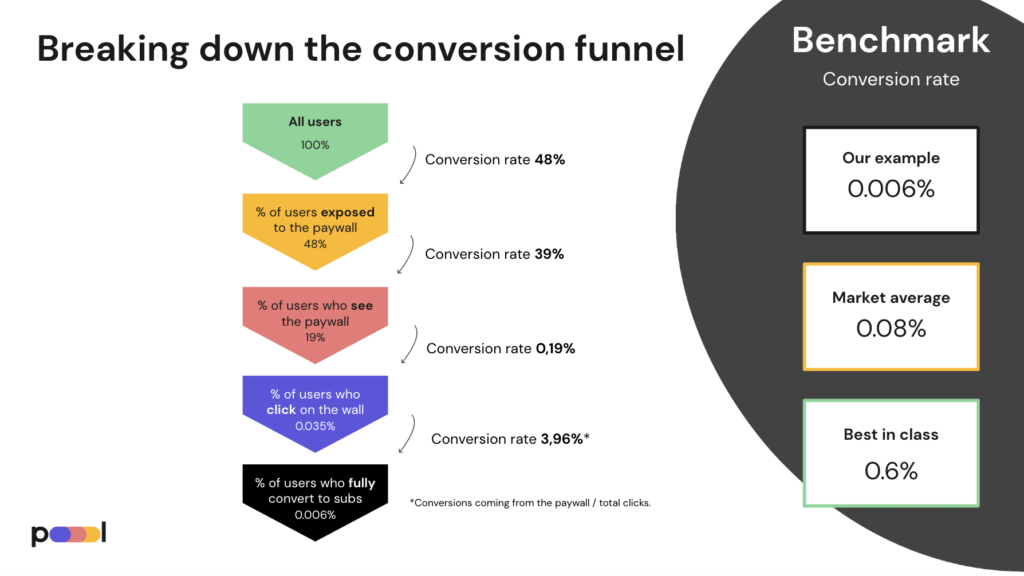
We also release a Conversion Funnel Benchmark Report each trimester, sharing market trends for each step and providing benchmark metrics from our clients, allowing publishers to compare themselves with others in the industry. By tracking these 5 steps, you concentrate efforts on smaller, more manageable problems, working through them to make incremental improvements on the bigger picture at hand.



